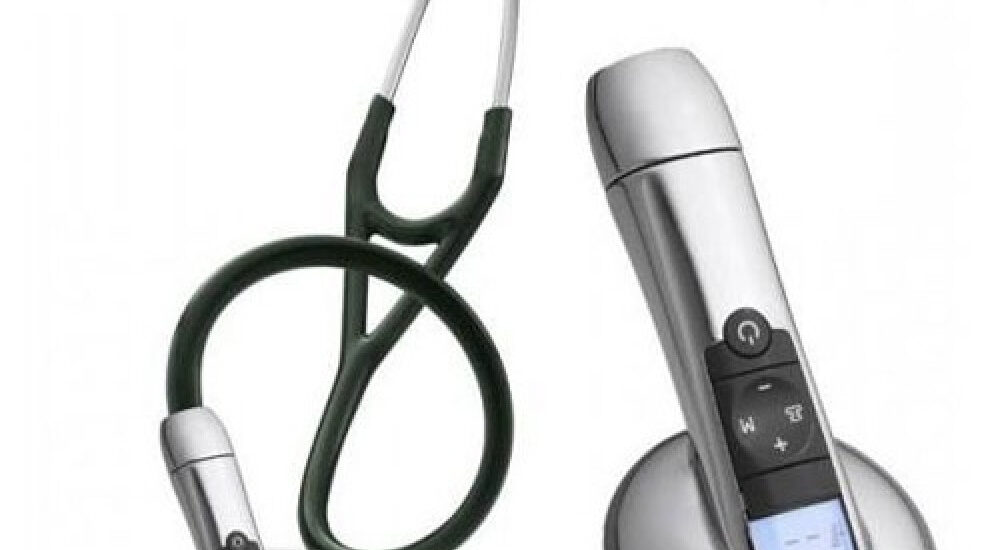According to the recently upgraded market intelligence report by FMI, the Electronic Stethoscope Market is predicted to be valued at USD 292.2 million in 2024. By the end of 2034, the market is estimated to achieve USD 528.2 million and is slated to expand at a 6.10% CAGR in the following decade.
The electronic stethoscope market has been evolving rapidly, driven by advancements in medical technology and growing demand for enhanced diagnostic tools. Unlike traditional acoustic stethoscopes, electronic stethoscopes amplify body sounds, allowing healthcare professionals to detect subtle abnormalities that may otherwise be missed. This innovation is transforming patient care by improving accuracy in diagnosis and enabling easier sharing of auscultation sounds for telemedicine purposes.
The increasing prevalence of cardiovascular and respiratory diseases has further contributed to the adoption of electronic stethoscopes. Medical practitioners, including cardiologists, pulmonologists, and general physicians, are recognizing the benefits of enhanced sound quality and noise reduction features. The electronic stethoscope market reflects a broader trend in healthcare towards integrating digital tools and smart devices that improve clinical outcomes and operational efficiency.
Get Sample Report: – https://www.futuremarketinsights.com/reports/sample/rep-gb-9457
Furthermore, electronic stethoscopes come equipped with features such as Bluetooth connectivity, recording capabilities, and integration with mobile applications, making them versatile for various clinical settings. These devices not only improve diagnostic precision but also facilitate education and remote patient monitoring, which are critical in today’s healthcare landscape. The electronic stethoscope market is positioned at the intersection of healthcare and technology, poised for significant growth due to ongoing innovations and increasing user awareness.
Market Trends
Several prominent trends characterize the electronic stethoscope market today. One major trend is the shift toward digital healthcare solutions that enable remote monitoring and telehealth services. Electronic stethoscopes, with their ability to record and transmit sounds, play a crucial role in this transformation by supporting virtual consultations and remote diagnostics. This trend has been accelerated by the global push for telemedicine adoption, especially in response to recent public health challenges.
Another notable trend is the integration of artificial intelligence (AI) and machine learning algorithms into electronic stethoscope devices. These technologies assist clinicians by analyzing heart and lung sounds to detect abnormalities automatically, reducing human error and saving valuable time. The fusion of AI with electronic stethoscopes enhances their diagnostic capabilities, making them more appealing to healthcare providers.
In addition, growing investment in research and development is driving the introduction of smaller, lighter, and more ergonomic models. These improvements increase user comfort and ease of use, which are critical factors influencing purchase decisions. The increasing adoption of wireless and battery-operated devices also reflects the demand for portability and convenience in clinical environments.
The demand for electronic stethoscopes is further supported by rising awareness among healthcare professionals regarding the limitations of traditional stethoscopes. As medical education increasingly incorporates digital tools, new generations of doctors and nurses are becoming proficient with electronic devices, further boosting market growth. Overall, the market trends point to a future where electronic stethoscopes will become standard tools in healthcare settings worldwide.
Challenges and Opportunities
Despite promising growth, the electronic stethoscope market faces several challenges. One significant challenge is the relatively high cost of electronic stethoscopes compared to conventional acoustic models. The advanced technology and features increase manufacturing costs, making these devices less accessible in low-income regions or smaller healthcare facilities with tight budgets. This cost barrier can limit widespread adoption, especially in developing countries.
Another challenge is the need for ongoing training and adaptation among healthcare providers. While electronic stethoscopes offer improved functionality, their operation can be complex for practitioners unfamiliar with digital tools. Ensuring adequate training and support is essential for maximizing the benefits of these devices and avoiding underutilization.
Interference from external electronic devices can also affect the quality of sound transmission in some models, posing technical challenges that manufacturers continuously work to address. Additionally, regulatory hurdles and varying standards for medical devices in different regions may slow the market expansion.
However, the electronic stethoscope market presents significant opportunities. Increasing demand for telehealth and remote patient monitoring is driving the need for devices that can transmit high-quality auscultation sounds over distances. This demand opens avenues for innovation in wireless technology and cloud-based data management integrated with electronic stethoscopes.
Growing awareness about the importance of early diagnosis and preventive healthcare is another key opportunity. Electronic stethoscopes, with their advanced features, enable early detection of cardiac and pulmonary conditions, potentially reducing healthcare costs and improving patient outcomes. Collaborations between technology companies and healthcare providers offer the chance to develop customized solutions tailored to specific clinical needs.
Furthermore, expansion into emerging markets with improving healthcare infrastructure represents a lucrative opportunity. As healthcare systems in these regions modernize, demand for advanced diagnostic tools such as electronic stethoscopes is expected to rise substantially. Thus, manufacturers and distributors focusing on strategic partnerships and localized marketing could capitalize on this growth.
Key Regional Insights
The electronic stethoscope market varies significantly across different regions due to factors such as healthcare infrastructure, economic development, and regulatory environment. Developed regions with advanced healthcare systems and high technology adoption rates often lead in market penetration and innovation.
North America, for example, has been a major hub for the electronic stethoscope market. The region benefits from strong healthcare spending, widespread use of digital health solutions, and significant investments in medical technology research. High awareness among healthcare professionals and favorable reimbursement policies contribute to the region’s prominence in adopting electronic stethoscopes.
Europe also plays a crucial role, supported by a large network of hospitals and clinics integrating digital tools into their clinical practices. Stringent regulatory standards and ongoing innovation contribute to the growth of the market in this region. Additionally, public health initiatives aimed at improving cardiovascular health drive demand for reliable diagnostic equipment.
Asia Pacific is emerging as a key growth market for electronic stethoscopes. Rapid urbanization, increasing healthcare expenditure, and expanding medical infrastructure support market expansion. Countries with large populations and rising incidences of chronic diseases represent significant opportunities. However, cost sensitivity remains a factor influencing the pace of adoption.
Other regions such as Latin America and the Middle East and Africa are gradually witnessing growth driven by increasing awareness and improving healthcare access. However, the market in these areas is still in its nascent stages, with opportunities primarily tied to infrastructure development and affordability.
Competitive Outlook
The competitive landscape of the electronic stethoscope market is marked by a mix of established medical device manufacturers and innovative startups. Companies are focusing on product innovation, strategic partnerships, and expanding their distribution networks to maintain a competitive edge.
A strong emphasis on research and development allows market players to introduce advanced features such as noise cancellation, AI integration, and enhanced connectivity options. This continuous innovation drives competition and offers users improved performance and usability.
Many companies are also pursuing collaborations with healthcare providers and technology firms to develop integrated solutions that fit into broader digital health ecosystems. Such partnerships help to extend the functionality of electronic stethoscopes beyond basic auscultation, enabling seamless data sharing and remote patient management.
Pricing strategies and after-sales services also play important roles in differentiating companies in this market. Offering reliable customer support, warranties, and training can build brand loyalty and encourage adoption among healthcare professionals.
Given the increasing importance of emerging markets, several companies are tailoring their product offerings to meet local needs, focusing on cost-effectiveness without compromising quality. This approach helps them tap into new customer bases and expand their global footprint.
Top Companies
Several prominent companies dominate the electronic stethoscope market, leveraging their expertise in medical technology and innovation. These firms have established strong brand recognition and a broad portfolio of products catering to various clinical needs.
Leading companies in the market prioritize continuous improvement and incorporate user feedback to refine their products. They invest heavily in research to develop features that enhance diagnostic accuracy and user convenience.
Some companies also focus on expanding their presence in emerging markets through partnerships and localized strategies, aiming to address the diverse needs of healthcare providers worldwide.
Additionally, companies that emphasize sustainability and environmentally friendly manufacturing practices are gaining favor among socially conscious consumers and institutions.
The presence of startups and technology firms entering the market introduces healthy competition and encourages established players to accelerate innovation. This dynamic environment fosters the development of cutting-edge electronic stethoscope solutions with improved functionalities and affordability.
Explore In-Depth Analysis-Click Here to Access the Report:- https://www.futuremarketinsights.com/reports/electronic-stethoscope-market
Segmentation Outlook
The electronic stethoscope market can be segmented in various ways based on product type, application, end user, and distribution channel. Each segment reflects distinct customer needs and usage scenarios, offering unique growth opportunities.
By product type, the market includes handheld electronic stethoscopes, Bluetooth-enabled devices, and wearable models. Handheld devices remain popular due to their familiarity and ease of use, while Bluetooth-enabled stethoscopes offer greater connectivity and data sharing capabilities. Wearable electronic stethoscopes represent an emerging category focused on continuous monitoring and integration with other wearable health technologies.
Applications of electronic stethoscopes range across cardiology, pulmonology, general diagnostics, and veterinary use. Cardiology accounts for a significant share, as accurate heart sound analysis is crucial for diagnosing cardiovascular conditions. Pulmonology also represents a key application area, given the importance of lung sound detection in respiratory diseases.
End users include hospitals, clinics, research institutions, and individual practitioners. Hospitals and clinics constitute the largest end-user segment due to their extensive diagnostic requirements. However, increasing adoption among individual healthcare providers and educational institutions is also contributing to market growth.
Distribution channels vary from direct sales and online platforms to medical device distributors and specialty stores. The rise of e-commerce has made electronic stethoscopes more accessible, enabling manufacturers to reach a broader audience and offer competitive pricing.
About Future Market Insights (FMI)
Future Market Insights, Inc. (ESOMAR certified, recipient of the Stevie Award, and a member of the Greater New York Chamber of Commerce) offers profound insights into the driving factors that are boosting demand in the market. FMI stands as the leading global provider of market intelligence, advisory services, consulting, and events for the Packaging, Food and Beverage, Consumer Technology, Healthcare, Industrial, and Chemicals markets. With a vast team of over 400 analysts worldwide, FMI provides global, regional, and local expertise on diverse domains and industry trends across more than 110 countries.
Contact Us:
Future Market Insights Inc.
Christiana Corporate, 200 Continental Drive,
Suite 401, Newark, Delaware – 19713, USA
T: +1-347-918-3531
For Sales Enquiries: sales@futuremarketinsights.com
Website: https://www.futuremarketinsights.com
LinkedIn| Twitter| Blogs | YouTube





